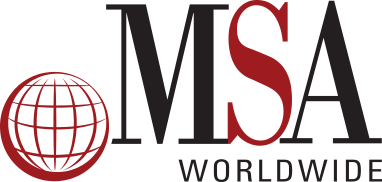By Michael Seid, Managing Director, MSA Worldwide
Indirect and Direct Methods of Franchise Marketing
In Part Four of the Threshold Analysis, we covered how to determine the support system and fees needed for your franchise system when conducting your threshold analysis. Here in Part Five, we’ll cover how to analyze your ability to expand your franchise system in the threshold analysis, including market development strategy and comparing indirect and direct methods of franchise marketing.
Franchising is simply a method of expansion used for a variety of reasons by different types of companies. Restaurateurs and service providers generally use franchising to expand the number of their branded locations, and will generally earn most of their continuing revenue based on the royalty charged to each of their franchisees.
Retailers and manufacturers, on the other hand, often employ franchising merely to establish a dedicated downstream distribution channel for their manufactured and branded products. For these franchisors, royalties and other continuing fees are often considered secondary to the income made from their supply chain, but come with the added risk of potentially entering into direct competition with their existing downstream distribution channels. Understanding your business and competitive marketplace and defining what is realistic and achievable growth for your company is essential in conducting the Threshold Analysis.
Some companies that enter franchising often seem to explode on the scene, but for most growth is often slower than what is hoped for, and relatively few franchisors actually become large national or international chains quickly, if ever. Being first to market with a new and revolutionary concept is certainly an advantage, so long as you have the budget to educate the public on your concept.
However, entering into an established market can also have its advantages — consider Wendy’s in the 1970s and Five Guys and Firehouse Subs today.
Growth Projections and Market Development Strategy
In evaluating your readiness to franchise, you need to have realistic growth expectations. Allowing your entrepreneurial spirit to cloud your judgment often leads to a franchisor organization that is too costly to be supported initially.
In your initial financial modeling you will need to consider the budget required to recruit franchisees, the amount needed to sustain your franchise marketing campaign, and the budget required to meet your ongoing contractual obligations, which needs to factor in a realistic understanding of your franchise sales, when those franchisees will join the system, and how long it will take before each unit opens.
You also need to have a realistic geographic market development strategy. You need to define where you can economically support your brand and have a clear understanding of the time required before you begin to receive any level of significant continuing royalties. Spending the bulk of your royalties in travel and related expenses to support distant franchisees, or worse — not visiting a franchisee because you can’t afford to — is not an acceptable position for any franchisor. Frequently, core markets and tertiary markets will require different downstream strategies.
No single element of a franchise system stands on its own. Each element of your franchise offering will rest to some degree on your ability to achieve the others, and to some extent will have an impact on the cost of the others.
Realistic growth projections are difficult for emerging franchisors to predict, and modeling growth projections against larger, more mature franchisors generally is the best, although imperfect, method to use. But again, realistically modeling against franchisors that most closely mirror your offering and business reality, as well as those you will be competing with for franchisees, both within and outside your direct retail level competitors, is important. The Canadian Franchise Association and the International Franchise Association publish reliable information, including directories, which you can use. Also, the actual growth and other information from those identified franchise competitors is readily available. Look closely at how franchise systems that are targeting the same classes of franchisees are assisting their franchisees in obtaining debt or leasing programs that facilitate their franchise growth. Understand if you will be able to provide that beneficial resource to your potential franchisees, as that will have a major impact on your ability to grow.
Direct vs. Indirect Franchise Marketing
Consider the economic impact and benefit of using a direct sales process compared to an indirect method, including outside brokers or area representatives. Choosing an indirect method may, but not always, create additional prospects for your system, but they come with additional costs and often create geographic and other stresses which new franchisors need to be concerned with. For emerging franchisors, developing a direct approach to franchise recruitment is generally preferred.
If you choose to use an indirect approach to franchisee recruitment, make certain that after paying brokerage commissions you still have the resources to pay for the initial and continuing support for your franchise system. Your ability to offset those indirect marketing costs with higher fees to franchisees may not be possible. It is important that you analyze the cost and growth benefits offered by third parties carefully.
If you plan on using a third party to market your franchise, make certain that they have an understanding of your system, including your geographic strategy. It is rarely, if ever, a good idea to share a percentage of your continuing royalty with brokers. Your relationship should be based on their performance in providing candidates who meet your criteria and can actually open locations. Before entering into any broker relationship, make certain that you engage legal or business counsel to assist you in conducting due diligence on the broker and ensuring that your agreement with the broker is accurately defined in a written agreement.
The Threshold Analysis will provide you with enough information to make a go-no-go decision on whether you are ready to franchise, and whether franchising is an appropriate option for your business. It will also allow you to begin to identify the gaps that exist in your organization, and the cost and time required to close those gaps before you can offer franchises. Even if the Threshold Analysis is positive in all other areas, you need to be certain that you have the resources necessary to close the important gaps you identify before beginning the design and development of your franchise system.
Using a qualified, independent outside professional to assist you in designing and conducting the Threshold Analysis is generally wise. One of the major benefits we provide our clients at MSA is the ability of tempering their entrepreneurial enthusiasm to franchise and provide them with the necessary unbiased opinion their family, friends and employees can’t.
Assuming that the Threshold Analysis is positive, you can now begin the detailed work necessary to design and develop your franchise system. We explore the development of a franchise system in other articles.
Do you have questions about franchising your business?
MSA Worldwide provides expert guidance on building a successful and sustainable franchise business. Contact us today for a complimentary consultation.




